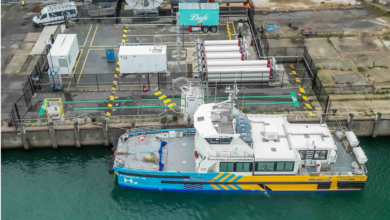Boeing’s Insitu provides updates on its drone fuel cell technology
The ScanEagle3 UAV will also be flight-tested with liquid hydrogen later this year

Insitu, a subsidiary of Boeing, unveiled progress details about its hydrogen fuel-cell power drone technology, H2Bulletin reports.
The company unmanned aerial vehicle (UAV), hydrogen-electric ScanEagle3 UAV, has conducted various test flights over the last few months. It went on its flight mission in December last year and remained in the air for half an hour. The unmanned plane is an all-electric powered by a hydrogen-fuelled proton exchange membrane (PEM) fuel cell.
In February this year, ScanEagle3 was tested with a Liquid Hydrogen (LH2) flight tank at Washington State University’s Hydrogen Properties for Energy Research (HyPER) Lab. The 3-D-printed LH2 tank is industry-first of its kind and set to provide longer than 10-hour support to the flight. Tests are expected to continue in the second quarter, with the first LH2 flight planned late this year. The LH2 and fuel cell will compare acoustic and thermal attributes of the internal combustion engine and an all-electric power system.
Andrew Duggan, Managing Director Insitu Pacific, said, “Operationally, fuel-cell-powered platforms provide the potential for longer endurance missions, increased power availability for payloads, as well as significant reductions in noise signature.”
Like many other industries, the defence industry is also keen on developing hydrogen fuel cell technology given its environmental and operational benefits, including better ISR data collection, lower thermal and acoustic features, better payload, improved reliability and lower logistics costs.
